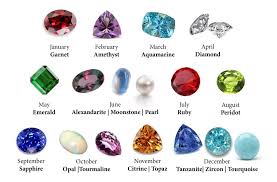Death at the Bar is a classic murder mystery novel written by Ngaio Marsh, a prolific writer of detective fiction during the golden age of detective fiction. First published in 1940, the novel is set in a small English town called Devon, where a group of regulars at a local pub witness a murder. The victim is a well-known barrister, and suspicion falls on almost everyone in the pub. In this essay, we will explore the different elements that make “Death at the Bar” a timeless classic of the genre.
The first element that stands out in Death at the Bar is the well-developed characters. Marsh spends a considerable amount of time introducing the various suspects, each with their own distinct personalities and motives. For instance, the victim, Sir Henry Ancred, is presented as an arrogant and unpleasant man who had made many enemies in his profession. His wife, Lady Ancred, is portrayed as a grieving widow with secrets of her own. The suspects, including a famous artist, a retired colonel, a young woman, and a Frenchman, among others, are all presented as plausible culprits with the means and the motive to commit the crime. Marsh expertly balances the clues and red herrings to keep the reader guessing until the end, making the novel a real page-turner.
The second element that makes Death at the Bar a classic is the intricate plot. Marsh weaves a complex and well-crafted mystery that keeps the reader engaged from start to finish. The novel is structured around a series of interrogations and investigations, as Inspector Alleyn tries to piece together the clues and identify the killer. Marsh expertly lays out the clues and suspects, building up the tension and suspense as the investigation progresses. As the case unfolds, new pieces of evidence come to light, leading the reader down different paths and keeping them guessing until the very end.

The third element that makes Death at the Bar a classic is the setting. The novel is set in a small English town, with the local pub as the focal point of the story. The pub is presented as a microcosm of English society, with the regulars representing different social classes and attitudes. Marsh masterfully depicts the social dynamics of the pub, with its cliques and rivalries, and uses it to create a rich and believable backdrop for the murder. The town itself is also well-drawn, with its quaint streets and local characters, adding to the sense of place and atmosphere of the story.
The fourth element that makes Death at the Bar a classic is the character of Inspector Alleyn. As the main protagonist of the story, Alleyn is a compelling and complex character. He is intelligent, perceptive, and methodical, but also has a dry sense of humor and a touch of arrogance. Alleyn’s interactions with the suspects are a highlight of the novel, as he uses his wit and charm to draw out information and gauge their reactions. Marsh also hints at a romantic subplot between Alleyn and one of the suspects, adding a layer of complexity to the character and the story.

One potential drawback of Death at the Bar is that it was written almost a century ago, and some of the language and attitudes may be outdated or offensive to modern readers. For example, the treatment of women and minorities in the novel may be seen as insensitive or discriminatory by modern standards. However, it is important to view the novel in its historical context and appreciate it for what it is – a product of its time that reflects the attitudes and values of the period.
Death at the Bar is a timeless classic of the detective fiction genre. Marsh’s well-developed characters, intricate plot, rich setting, and compelling protagonist make the novel an engaging for all readers. You can get a copy from Amazon here.






Leave a comment